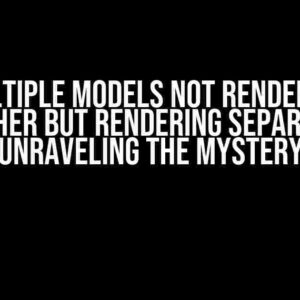Are you tired of struggling with the Compose focus requester in your application? Do you find yourself wondering why it never seems to work as expected? Well, wonder no more! In this article, we’ll dive deep into the world of focus requesters, explore the common pitfalls, and provide you with a comprehensive guide on how to get it working like a charm.
What is a Focus Requester?
A focus requester is a mechanism used in applications to request focus for a specific element or component. In the context of Compose, it’s used to bring a particular element into focus, allowing the user to interact with it seamlessly. However, when the Compose focus requester never works, it can lead to a frustrating user experience.
Common Reasons Why Compose Focus Requester Fails
Before we dive into the solutions, let’s take a look at some common reasons why the Compose focus requester might not be working as expected:
- Incorrect Element Hierarchy: If the element you’re trying to focus is not a direct child of the composable function, the focus requester might not work.
- Overlapping Elements: When multiple elements overlap, the focus requester can get confused, leading to unexpected behavior.
- Focus Requester Not Properly Configured: If the focus requester is not correctly configured, it might not work as intended.
- Composition Ambient Not Provided: Failing to provide the composition ambient can prevent the focus requester from working correctly.
- Focus Requester Not Called Within the Composable Scope: If the focus requester is not called within the composable scope, it won’t work as expected.
Solution 1: Verify Element Hierarchy
To ensure the element hierarchy is correct, follow these steps:
- Inspect the composable function’s element hierarchy using the Android Studio’s Layout Inspector or the Compose Tooling.
- Verify that the element you’re trying to focus is a direct child of the composable function.
- If the element is not a direct child, restructure your composable function to ensure it meets the hierarchy requirements.
@Composable
fun MyComposable() {
Column {
// Correct hierarchy: Button is a direct child of Column
Button(onClick = { /* handle click */ }) {
Text("Click me!")
}
}
}
Solution 2: Avoid Overlapping Elements
To prevent overlapping elements, follow these guidelines:
- Avoid using absolute positioning or overlap layers.
- Use the
offsetorpaddingmodifiers to adjust the element’s position instead of overlapping. - Use the
Layoutcomposable function to manage the layout of your elements.
@Composable
fun MyComposable() {
Column {
Button(onClick = { /* handle click */ }) {
Text("Click me!")
}
// Use offset to adjust the position instead of overlapping
Button(onClick = { /* handle click */ }) {
Text("Click me too!")
}.offset(x = 10.dp, y = 20.dp)
}
}
Solution 3: Properly Configure the Focus Requester
To ensure the focus requester is correctly configured, follow these steps:
- Import the
FocusRequestercomposable function. - Create an instance of
FocusRequesterand pass it to the element you want to focus. - Call the
requestFocus()function on the focus requester to request focus.
@Composable
fun MyComposable() {
val focusRequester = remember { FocusRequester() }
Column {
Button(
onClick = { /* handle click */ },
modifier = Modifier.focusRequester(focusRequester)
) {
Text("Click me!")
}
LaunchedEffect(Unit) {
focusRequester.requestFocus()
}
}
}
Solution 4: Provide the Composition Ambient
To ensure the composition ambient is provided, follow these steps:
- Import the
CompositionLocalProvidercomposable function. - Wrap your composable function with the
CompositionLocalProvider. - Provide the
CompositionAmbientusing theCompositionLocalProvider.
@Composable
fun MyComposable() {
CompositionLocalProvider(CompositionAmbient provides/* your composition ambient */) {
// Your composable function here
}
}
Solution 5: Call the Focus Requester Within the Composable Scope
To ensure the focus requester is called within the composable scope, follow these guidelines:
- Call the
requestFocus()function within the composable scope. - Avoid calling the focus requester from outside the composable scope, such as from a ViewModel or a separate thread.
@Composable
fun MyComposable() {
val focusRequester = remember { FocusRequester() }
Column {
Button(
onClick = { /* handle click */ },
modifier = Modifier.focusRequester(focusRequester)
) {
Text("Click me!")
}
// Call requestFocus() within the composable scope
LaunchedEffect(Unit) {
focusRequester.requestFocus()
}
}
}
Conclusion
There you have it! By following these solutions, you should be able to troubleshoot and fix the Compose focus requester never working issue. Remember to verify the element hierarchy, avoid overlapping elements, properly configure the focus requester, provide the composition ambient, and call the focus requester within the composable scope.
| Solution | Description |
|---|---|
| Verify Element Hierarchy | Ensure the element is a direct child of the composable function. |
| Avoid Overlapping Elements | Avoid using absolute positioning or overlap layers. |
| Properly Configure the Focus Requester | Create an instance of FocusRequester and pass it to the element. |
| Provide the Composition Ambient | Wrap your composable function with CompositionLocalProvider. |
| Call the Focus Requester Within the Composable Scope | Call the requestFocus() function within the composable scope. |
By following these best practices, you’ll be well on your way to creating a seamless user experience with Compose. Happy coding!
Frequently Asked Question
Get the answers to your most pressing questions about “Compose focus requester never works”!
Why does the compose focus requester never work?
This pesky issue is often caused by a mismatch between the focus requester and the focused widget. Make sure they’re properly aligned, and voilà! Your compose focus requester should start working like a charm.
What if I’ve tried aligning them, but it still doesn’t work?
Don’t worry, there’s more to explore! Check if your focus requester is properly registered in the focus manager. If that’s not the case, register it and see if that fixes the issue.
Is there a way to debug this issue more efficiently?
Absolutely! Enable debug logging for the focus manager to get more insight into what’s going on. This will help you identify the root cause of the problem and fix it in no time.
What about custom focus requester implementations?
If you’ve got a custom implementation, make sure it adheres to the focus requester contract. Double-check that it’s correctly handling focus requests and releases. If you’re still stuck, try reverting to the default implementation to see if that resolves the issue.
Are there any known platform limitations that could be causing this issue?
Yes, some platforms have limitations when it comes to focus requesters. Research the specific platform you’re on and see if there are any known gotchas or workarounds for this particular issue.


